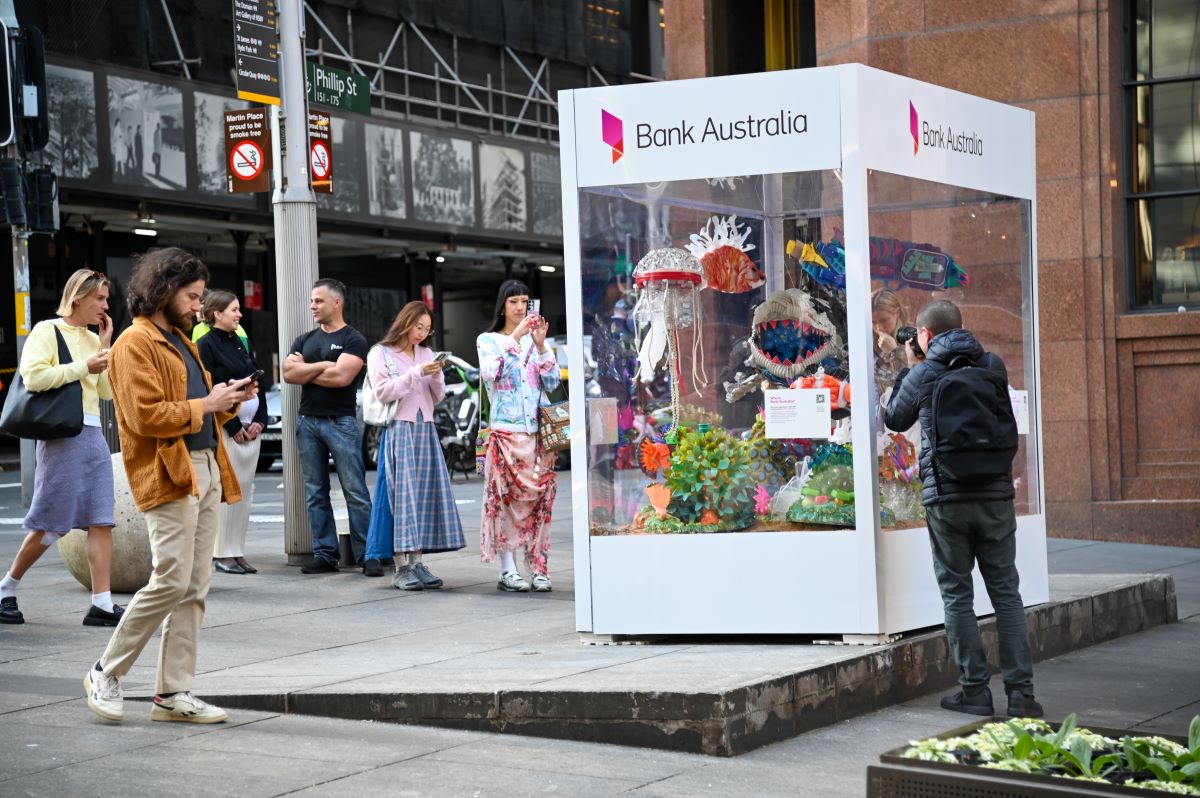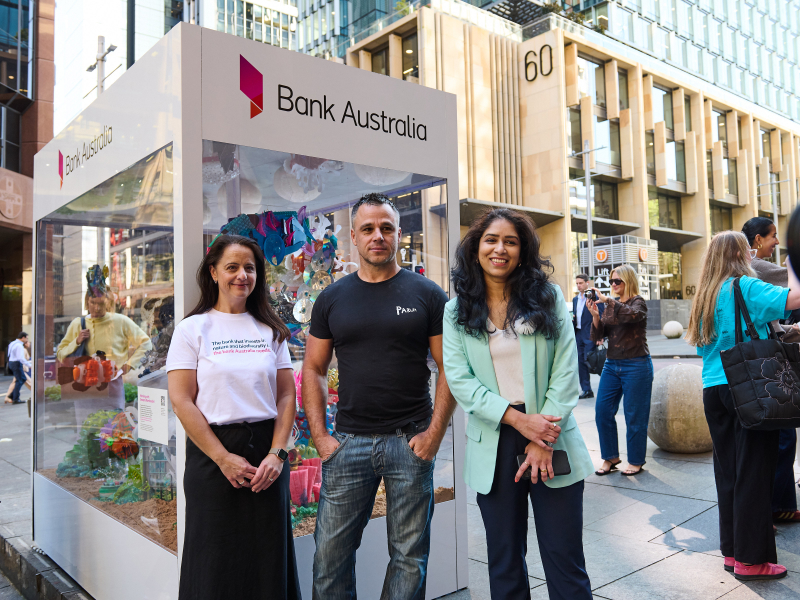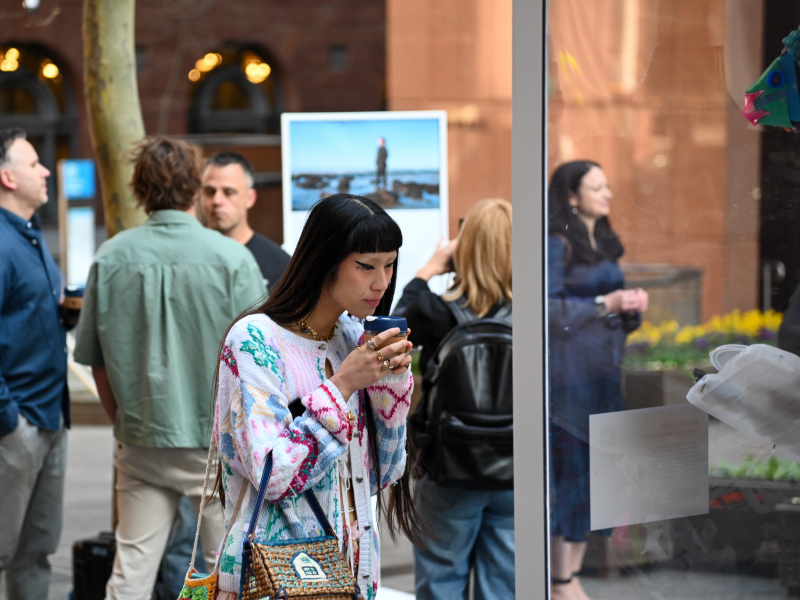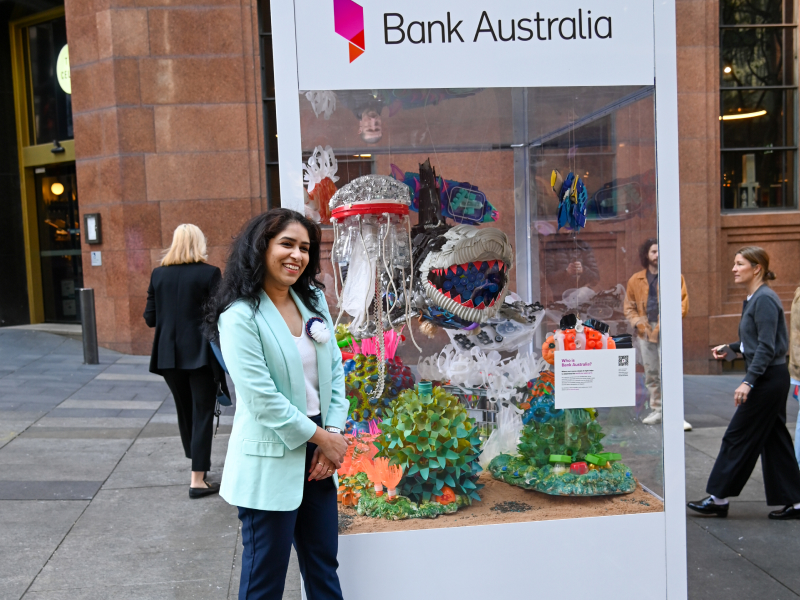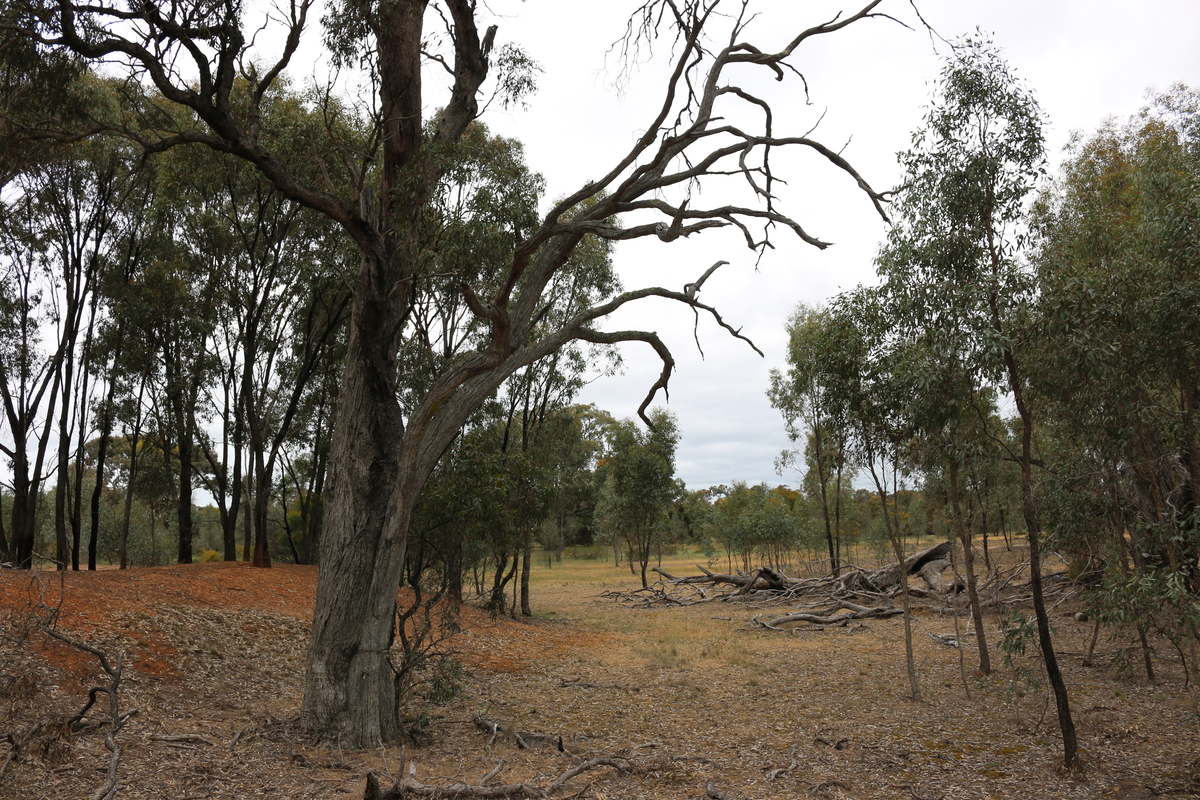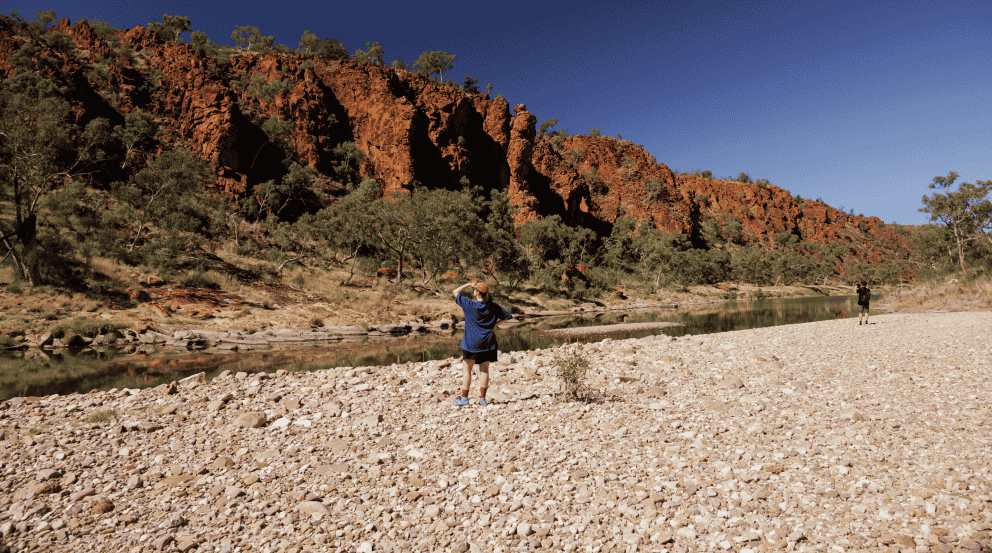We partnered with an acclaimed artist who created a beautiful, thought-provoking public art installation highlighting a big problem for our oceans, and a small, practical step in the right direction together with our customers.
To celebrate the launch of our new recycled plastic bank cards – made with 100% recycled plastic*, with 64% collected from coastal communities by Parley for the Oceans™ – we brought something extraordinary to the heart of Sydney: the Aquarium of Tomorrow, a thought-provoking public art installation by multidisciplinary environmental artist Swapna Namboodiri.

Why we created It
Four out of five of our customers told us they’re extremely concerned about plastic waste1. That’s why we’ve launched Australia’s first translucent recycled plastic bank card, reducing reliance on virgin plastic and giving waste a second life. With an estimated 21,000 pieces of plastic in the ocean for every person on Earth2, the Aquarium of Tomorrow is more than an art installation – it’s a powerful statement about the possible future of our oceans.
LiamNeal-01822.jpg)
Meet the Artist: Swapna Namboodiri
For Swapna, art is about connection – with people, with materials, and with the stories we often overlook. Her practice transforms discarded plastics into striking, thought-provoking works that invite reflection on our relationship with waste.
“Art is a mirror and a map,” Swapna says. “I’m using these less-valued materials to narrate the story of global issues – the climate, environmental and waste crises. Nothing is waste until it gets wasted.”
Swapna’s process is meticulous and entirely hands-on. She collects plastics from local communities and coastal debris, then cuts, stacks, and hand-stitches each piece without heat, inspired by the textures of coral reefs. Her work has been showcased globally, from Doha to Adelaide, and now in Sydney with the Aquarium of Tomorrow.
From waste to wonder
The installation wasn’t just beautiful – it’s a call to action. By reimagining plastic waste as art, the Aquarium of Tomorrow challenges us to rethink how we use and discard materials in our daily lives.
As a customer-owned bank, we’ve always believed in doing things differently. We don’t lend to industries like fossil fuels, arms, or tobacco, guided by our responsible banking policy. We do fund our everyday customers, protecting nature and biodiversity – including through caring for a 2,117 hectare conservation reserve – and clean energy transition. Launching our recycled plastic card is aligned with this approach: they’re a small, practical step in the right direction for our oceans.
Learn more about our cards with Parley for the Oceans.
____________________________________________________
